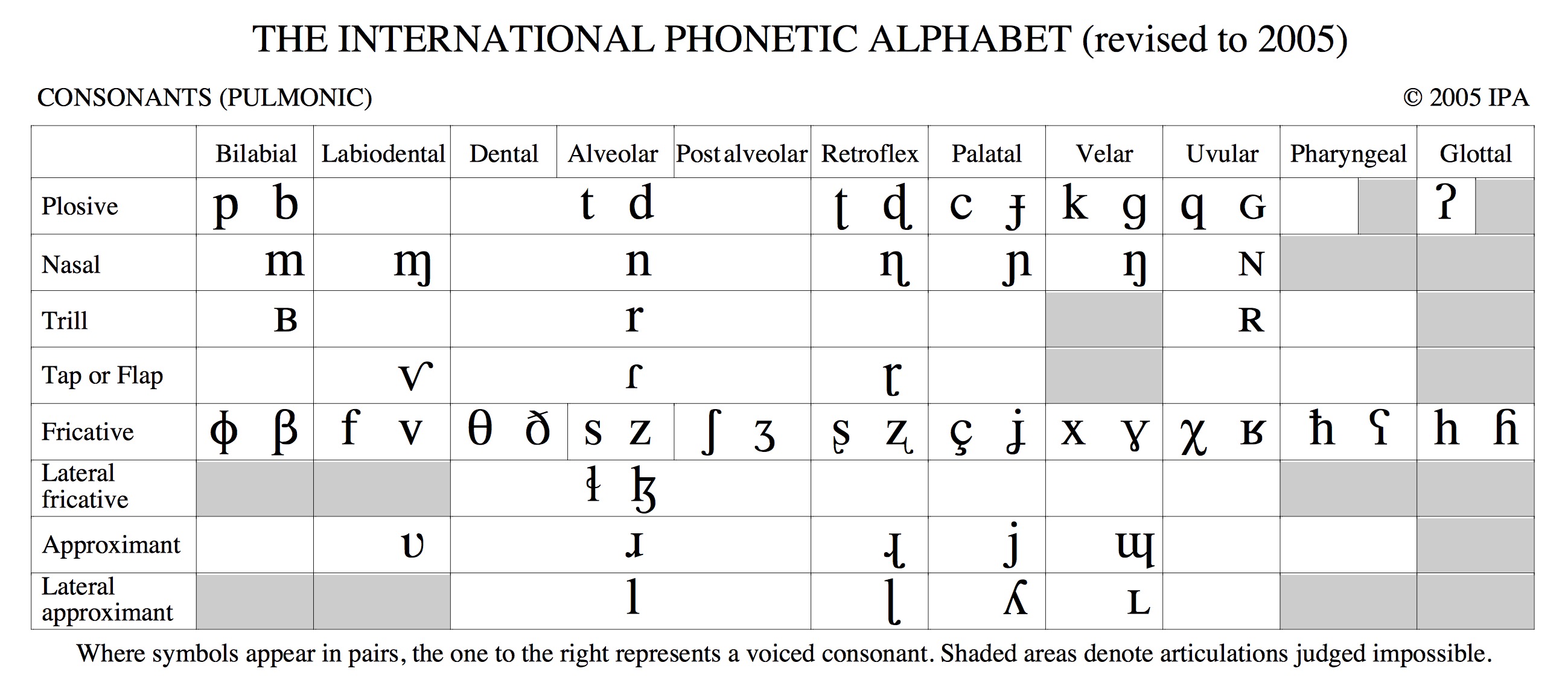
The syllabus has been updated
Will: Wednesday 10:00-11:00am, Friday 1:15-2:30pm, AP&M 4151
Kati: Monday 10:00-11:00am, AP&M 4432
Michael: Friday 12-1pm, AP&M 3351A
Reviewing the IPA and other speech concepts
General Phonetic Concepts for phonology
Phonetics and Naturalness
Consonants: Constrict, obstruct, or divert air in the vocal tract when being produced
Vowels: Shape the (unobstructed) vocal tract to change the sound emitted
| ### Three steps to describing Consonants |
| * We need to know three things: |
| * Place: Where is the sound made? |
| * Manner: What are we doing there? |
| * Voicing: Are we making voicing? |

Ask Sammy the Interactive Sagittal Section!
A vowel is voicing passing through (and resonating in) an unobstructed vocal tract!
If we change the position of the tongue, we change the resonances
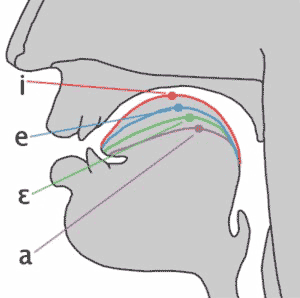
They’re always* voiced
They can (and do) occur on their own. I.
We describe vowels using different characteristics
For vowels, we talk about three additional dimensions
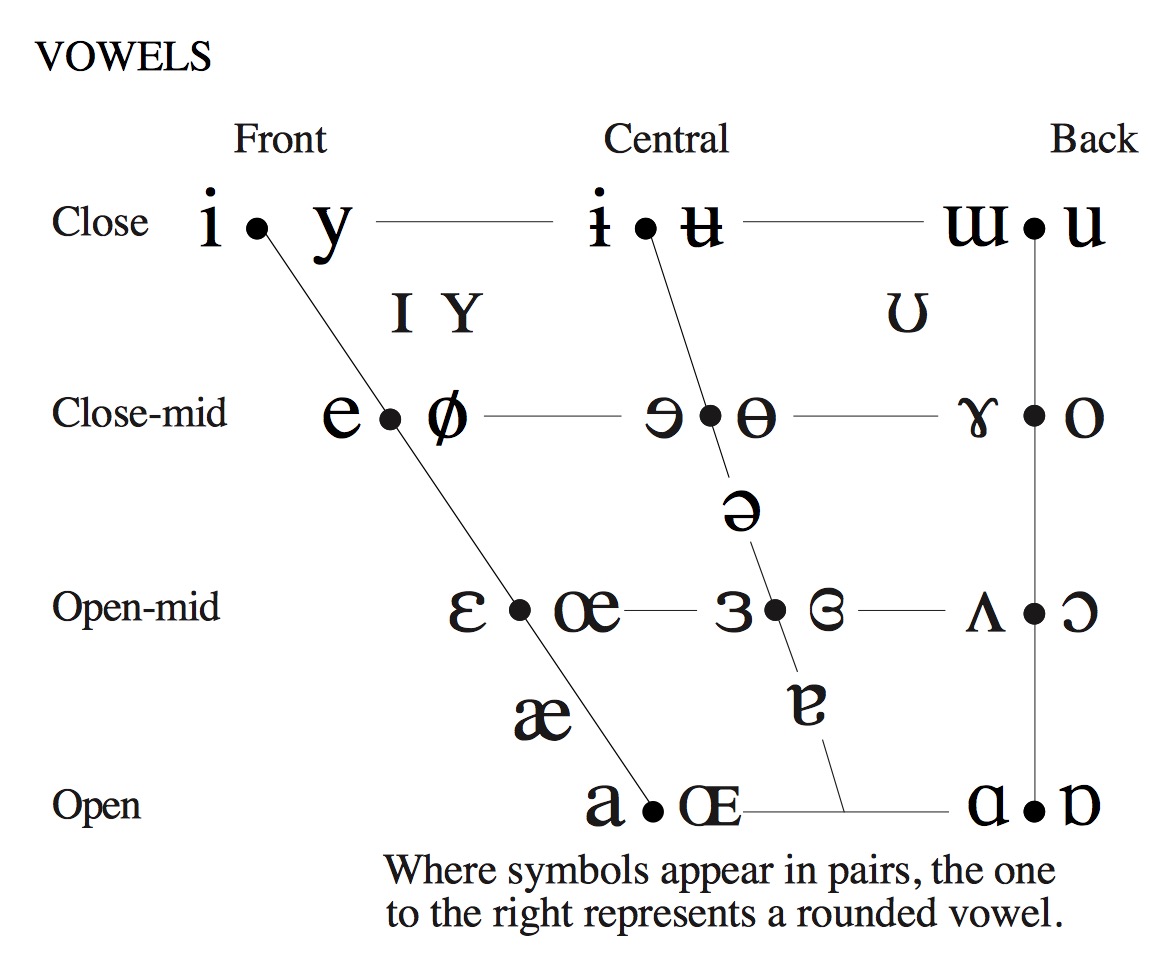
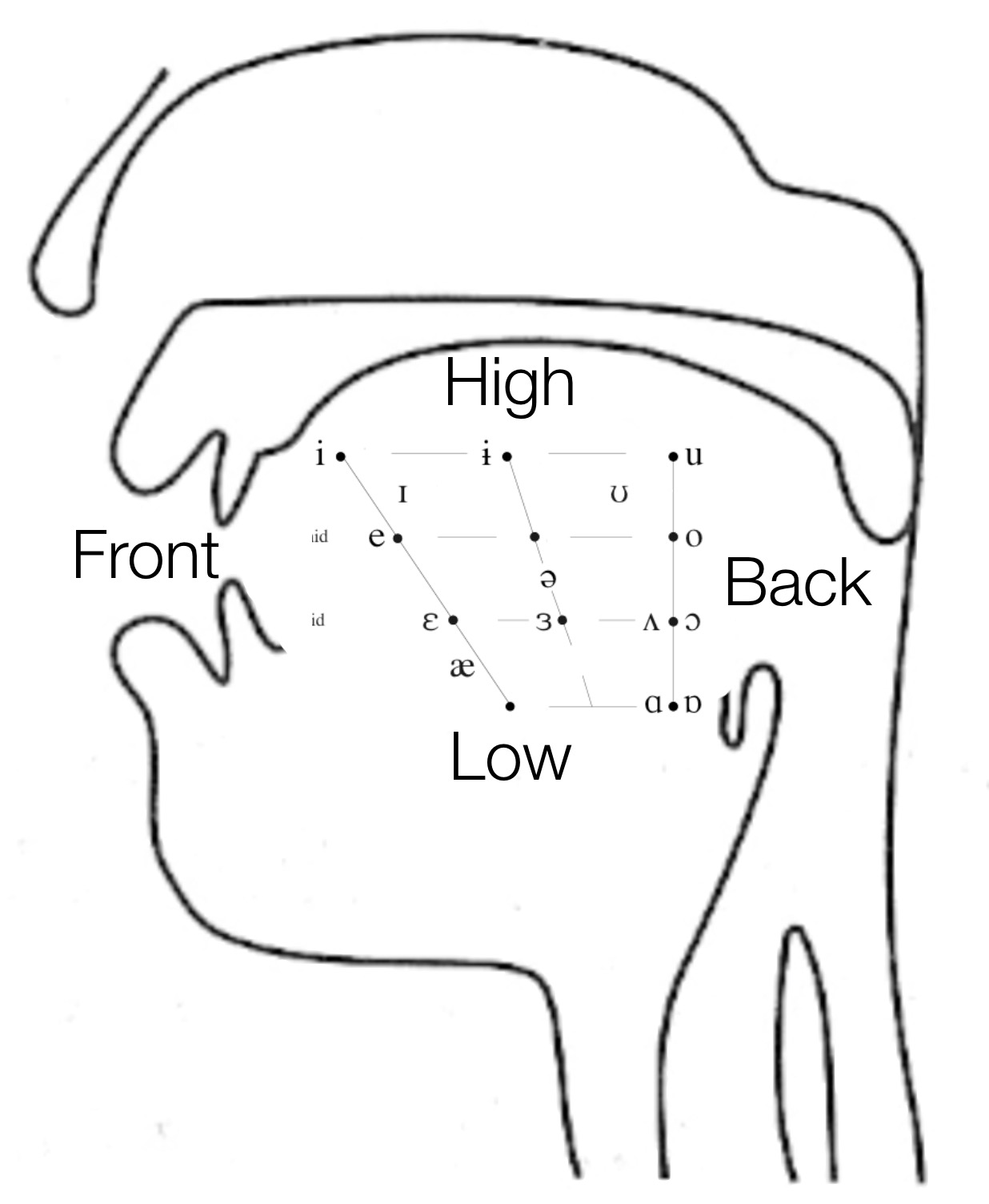
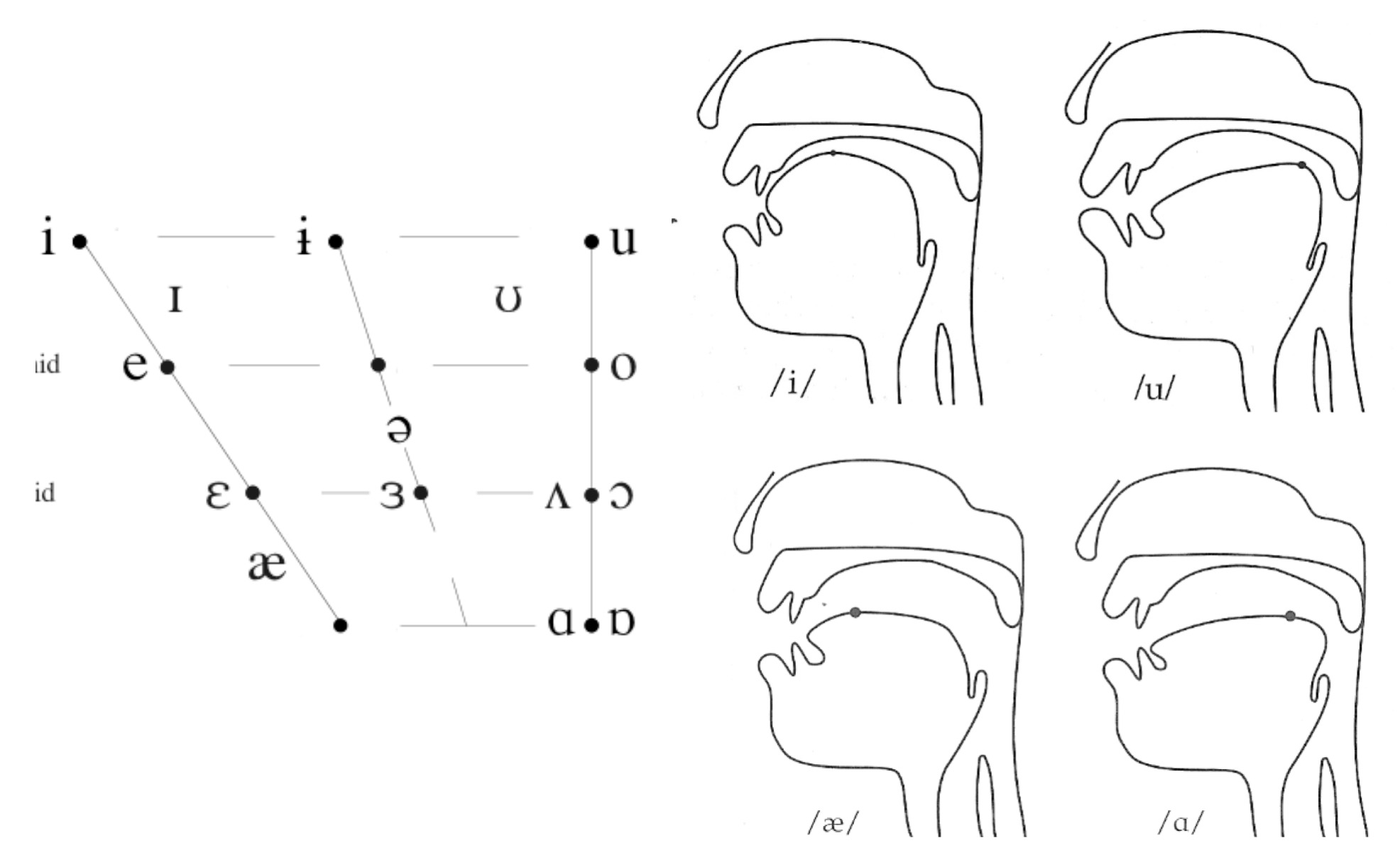 |
Vowels where the tongue moves through the mouth
Start at one vowel, move to another vowel
Things like “boy” (/ɔj/), “buy” (/aj/), “bay” (/ej/), “boat” (/ow/), “cow” (/aw/)
Others are monophthongs

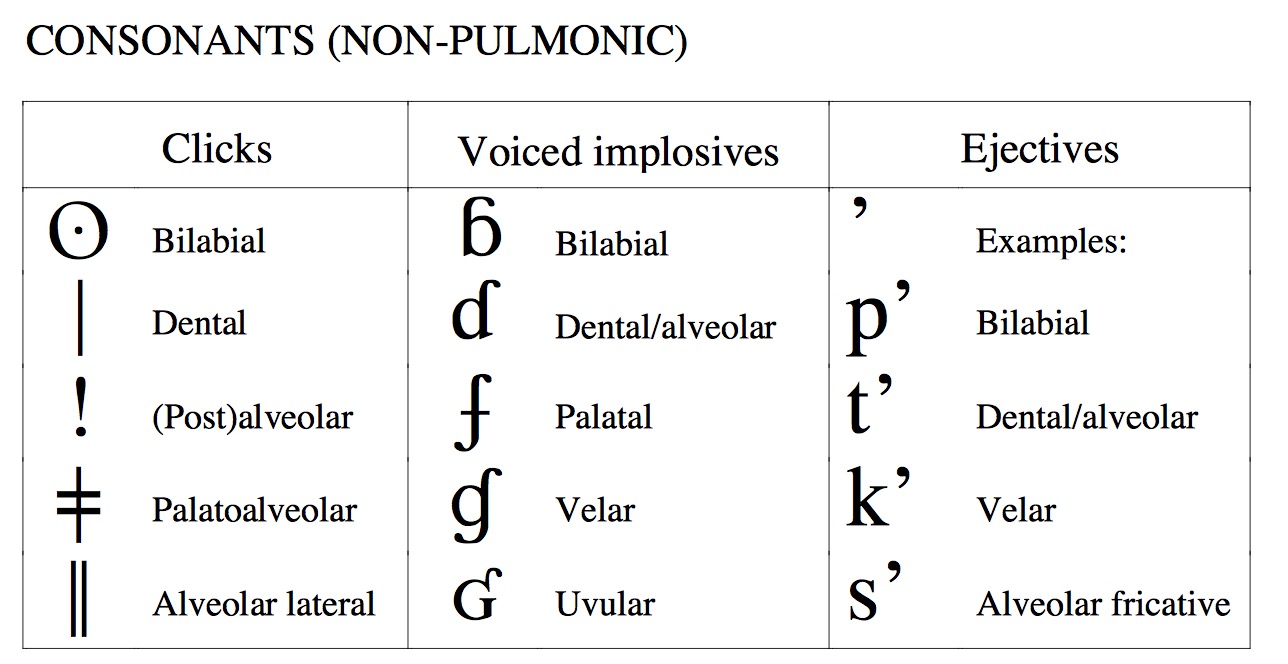


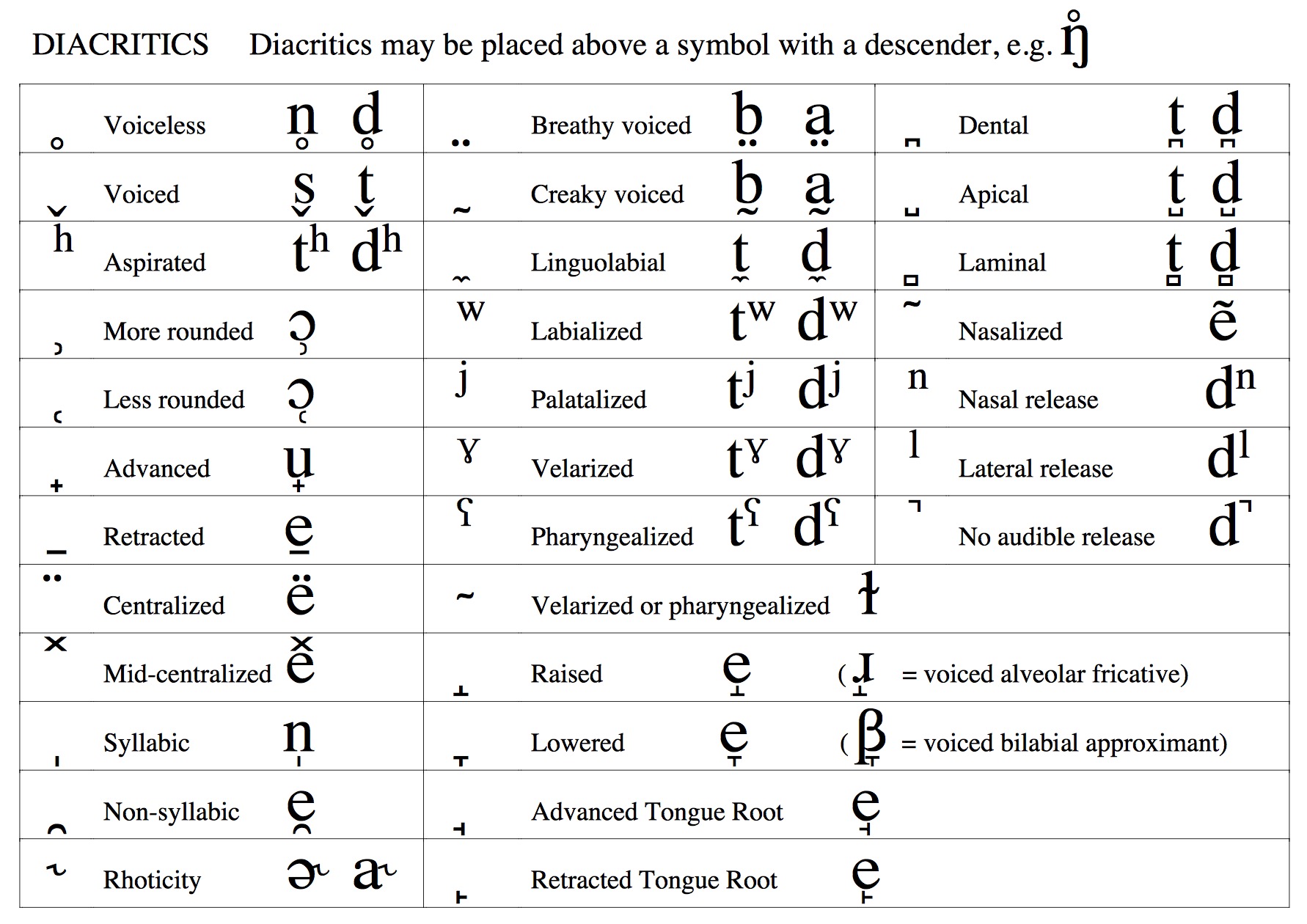

Thanks to Odden’s Introducing Phonology
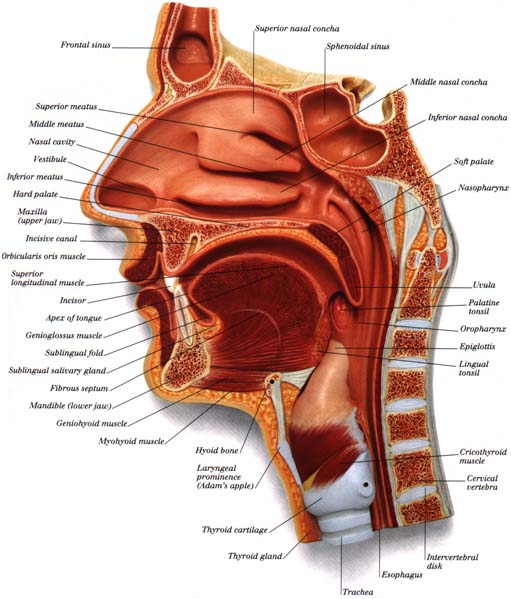

/r/ could mean /r/ or /ɹ/
š for /ʃ/
ž for /ʒ/
č for /tʃ/
ǰ for /dʒ/
y for /j/
ñ for /ɲ/
Subscript dots for retroflexes
: and ː are both used for length
Numerical tone markings (e.g. bi1 vs. bi5 vs. bi15 vs. bi31)
Government Phonology (c.f. Kaye, Lowenstamm, and Vergnaud 1985) builds a phonology almost devoid of phonetics
Words are built from six primitives, (A), (I), (U), (ʔ), (L) and (H), which are cognitive, not acoustic or articulatory
Individual sounds are generated via licensing, and interactions among primitives

♇ turns into 🜍 before ☋
/n/ turns into /ŋ/ before /g/

Why is /plʌmp/ legal while /lpʌpm/ wouldn’t be?
Are /t/, /b/ and /h/ likely to be three alternate forms of the same sound?
How do we know /ŋ/ and /h/ are different sounds in English?
/m/ often becomes /b/, seldom /k/
Natural Classes are a phonetic concept
Backing favors voicelessness
Geminate consonants are more likely to be voiceless
C.f. Ohala Aerodynamics of Phonology
Post-nasal devoicing?
Intervocalic devoicing?
Final voicing?
p -> b and k -> g but t -> l (e.g. Lakota)
Often, this is sound change in process